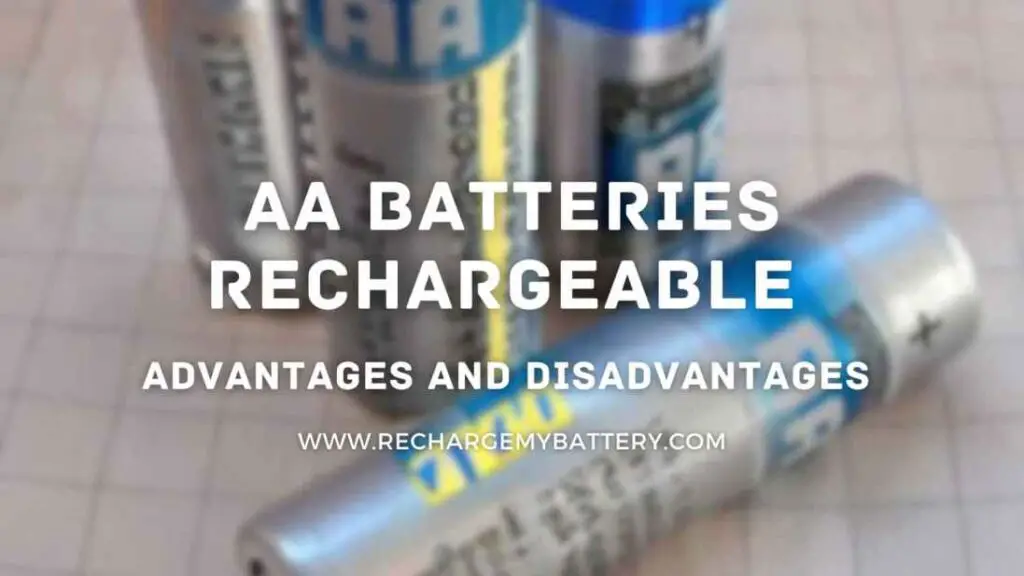Introduction
Rechargeable batteries have become an essential part of our daily lives, powering various devices such as smartphones, laptops, and electric vehicles. However, you may have noticed that rechargeable batteries often have lower voltage compared to disposable batteries. This article aims to explain the reasons behind this phenomenon and explore the chemistry and factors affecting the voltage of rechargeable batteries.
Understanding Rechargeable Batteries
Rechargeable batteries, also known as secondary batteries, are designed to be recharged and reused multiple times. They offer a cost-effective and environmentally friendly alternative to disposable batteries, which are commonly referred to as primary batteries.
The Chemistry Behind Rechargeable Batteries
Rechargeable batteries operate based on electrochemical reactions that occur within their cells. These cells consist of two electrodes, an anode (negative electrode) and a cathode (positive electrode), separated by an electrolyte. During discharge, the chemical reactions between the electrodes and the electrolyte produce an electrical current.
Voltage Discrepancy: Rechargeable vs. Disposable Batteries
One of the primary reasons rechargeable batteries have lower voltage compared to disposable batteries is their specific chemistry. Rechargeable batteries typically use different electrode materials and electrolytes, which affect their voltage output.
Disposable batteries, such as alkaline batteries, are constructed with different chemistries, often employing zinc and manganese dioxide. These chemistries allow disposable batteries to have higher voltage outputs compared to rechargeable batteries. However, disposable batteries are not designed for recharging and are generally discarded after their energy is depleted.
Factors Affecting Voltage in Rechargeable Batteries
Several factors contribute to the lower voltage observed in rechargeable batteries:
1. Cell Design
The internal structure and design of the battery cells play a crucial role in determining the voltage output. Rechargeable batteries are designed with specific electrode materials and cell configurations that prioritize long-term usability over immediate voltage.
2. Electrode Materials
The choice of electrode materials significantly impacts the voltage performance of rechargeable batteries. Different materials have varying energy densities and electrochemical potentials, influencing the overall voltage output.
3. Electrolyte Composition
The electrolyte, a conductive solution in rechargeable batteries, affects the ionic flow between the electrodes. The composition of the electrolyte influences the overall voltage and the battery’s ability to store and release energy efficiently.
4. Charging and Discharging Efficiency
Rechargeable batteries undergo charging and discharging cycles, which can affect their overall voltage performance. Factors such as charging rate, depth of discharge, and temperature can impact the efficiency of the electrochemical reactions, leading to slight variations in voltage.
Benefits and Drawbacks of Rechargeable Batteries
Rechargeable batteries offer numerous advantages over disposable batteries, including cost savings, reduced environmental impact, and convenience. However, it is important to consider some drawbacks as well:
Benefits:
- Cost-effective in the long run, as they can be recharged and reused multiple times.
- Environmentally friendly, as they reduce the number of batteries being discarded.
- Widely available in various sizes and types to suit different devices.
- Provide a stable power output throughout their discharge cycle.
Drawbacks:
- Lower initial voltage compared to disposable batteries.
- Require a charging device or power source to recharge.
- Limited lifespan, as rechargeable batteries gradually lose their capacity over time.
Improving Voltage Performance in Rechargeable Batteries
Researchers and manufacturers are continuously working on improving the voltage performance of rechargeable batteries. Some approaches being explored include:
- Development of new electrode materials with higher energy densities.
- Optimization of electrolyte compositions for enhanced ionic flow.
- Advancements in cell design and architecture to maximize voltage output.
- Integration of nanotechnology for improved battery performance.
These advancements aim to bridge the voltage gap between rechargeable and disposable batteries, making rechargeable options more appealing in terms of voltage output without compromising their core benefits.
Conclusion
Rechargeable batteries have lower voltage compared to disposable batteries due to differences in chemistry and design. The specific electrode materials, electrolyte composition, and cell configurations of rechargeable batteries contribute to their lower voltage output. While rechargeable batteries offer numerous advantages, it is important to consider their voltage limitations and choose the appropriate battery type based on specific device requirements.
Thank you for reading it.

